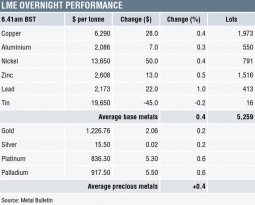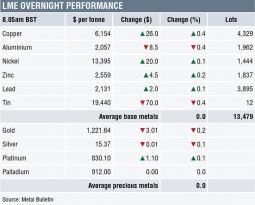The rising cost of raw materials was the dominant trend in the markets at the end of July in what should have been a lazy summer stretch for trade.
China’s decision to ban imports of copper scrap, and major producer Glencore’s reduced mined copper output guidance for 2017 helped push three-month copper prices on the LME and Comex to more than a two-year high.
Tightening raw material supply is also driving ferro-alloy and high temperature metal markets. The trend is led by a shortage of vanadium units in China, exacerbated by production shortfall in Pangang and China’s decision to block imports of vanadium slag.
This has led to a sharp increase in demand and prices for vanadium primary and secondary units, and a spike in prices of ferro-vanadium across regional markets this week. In Europe, duty-paid ferro-vanadium prices rose to $40-41/kg V at the end of this week from $29-29.50/kg a week ago, and the highest price in absolute terms since October 2008.
This sharp move in the ferro-vanadium price swept other noble alloys markets along with it, as ferro-molybdenum and ferro-tungsten also traded up this week. But rising prices of feedstock, roasted molybdenum concentrates and tungsten concentrate and scrap are also underpinning these markets.
A bottleneck in supply of certified columbite-tantalite from central Africa is also supporting the market for tantalum powder and metal, as prices for tantalum units in concentrate are increasingly achieved towards the higher end of the current range, as are niobium units in columbite.
Passive electronic components manufacturer AVX is seeing lead time lengthen for its tantalum capacitors and is seeing a growth in demand from solid state drives and smartphones. The …
Read More
Source: Metal Pages
WEEK IN REVIEW: Feedstock crunch leads FeV towards 9-year high
Recent Posts








